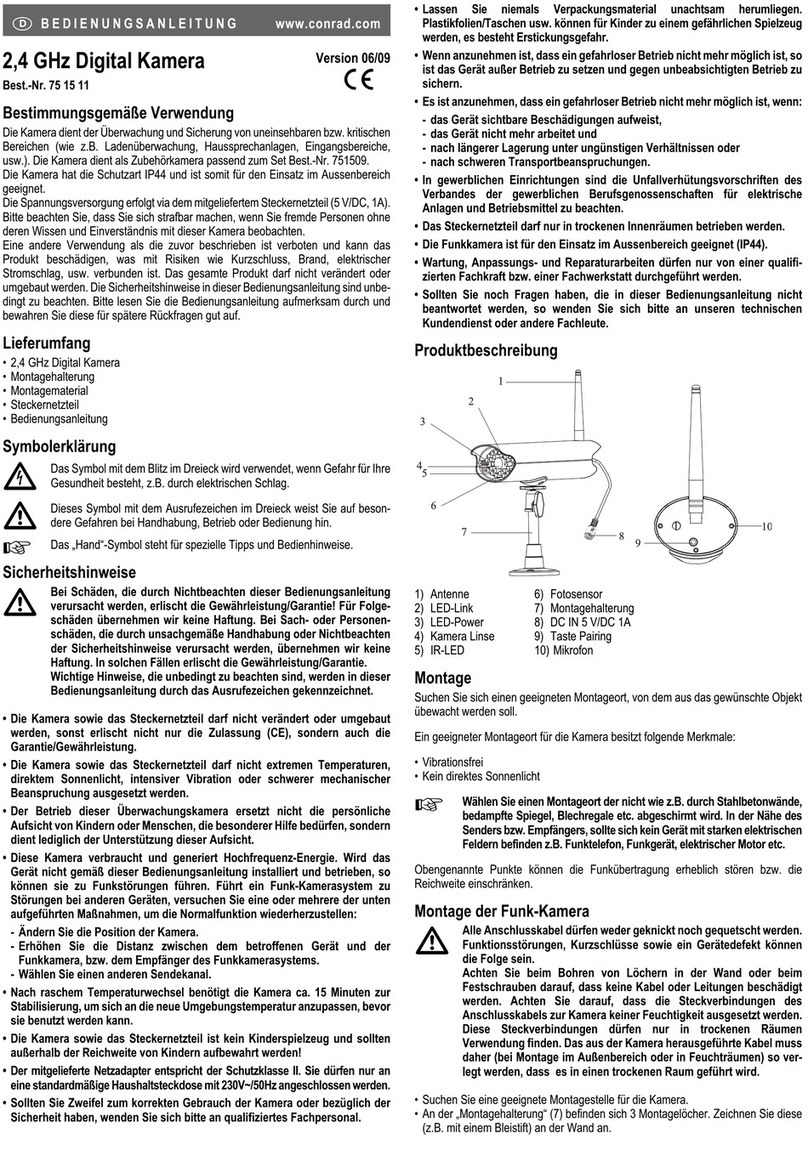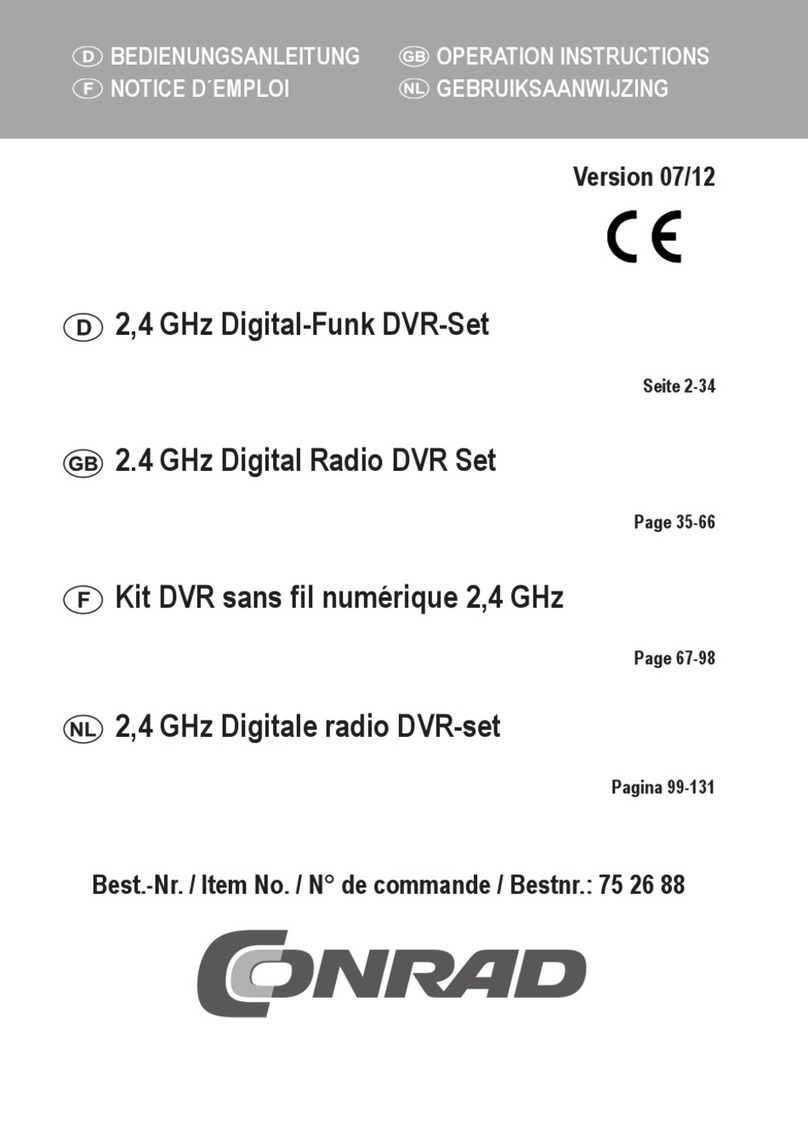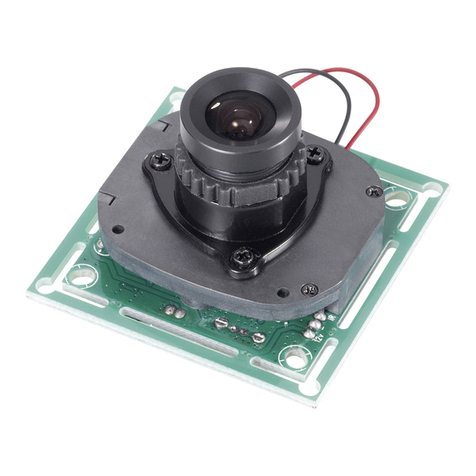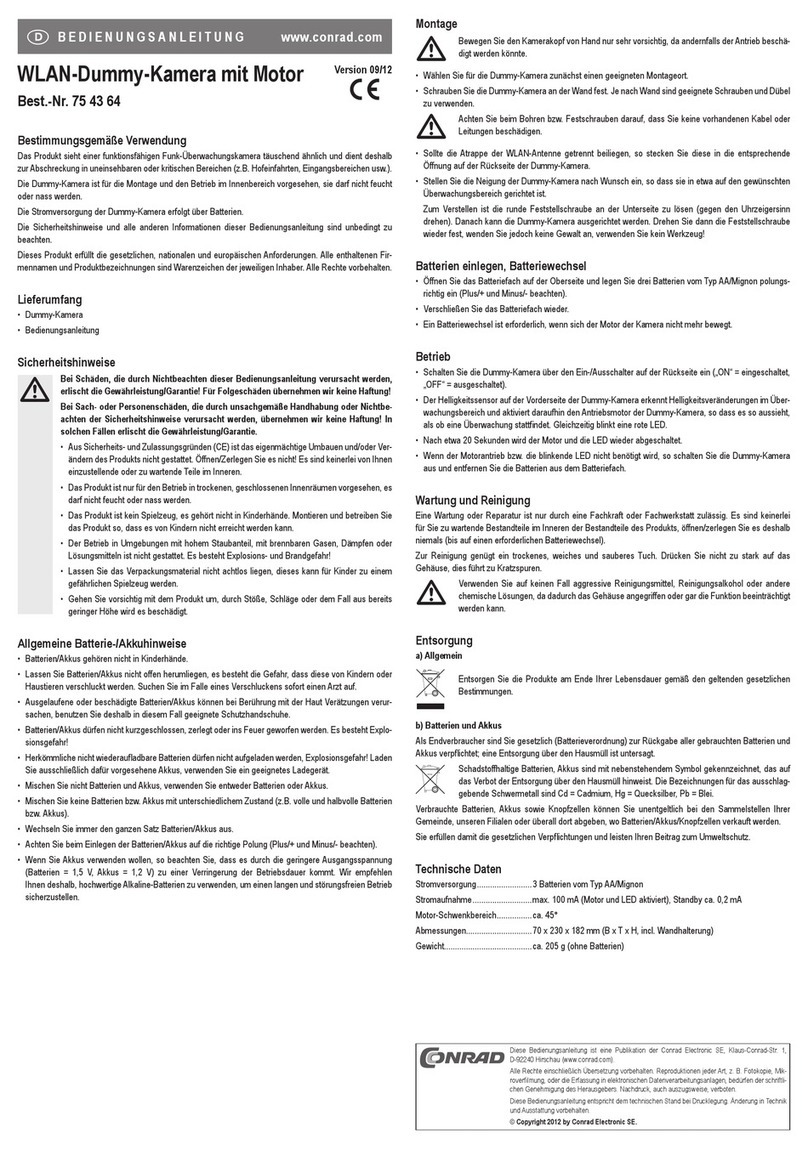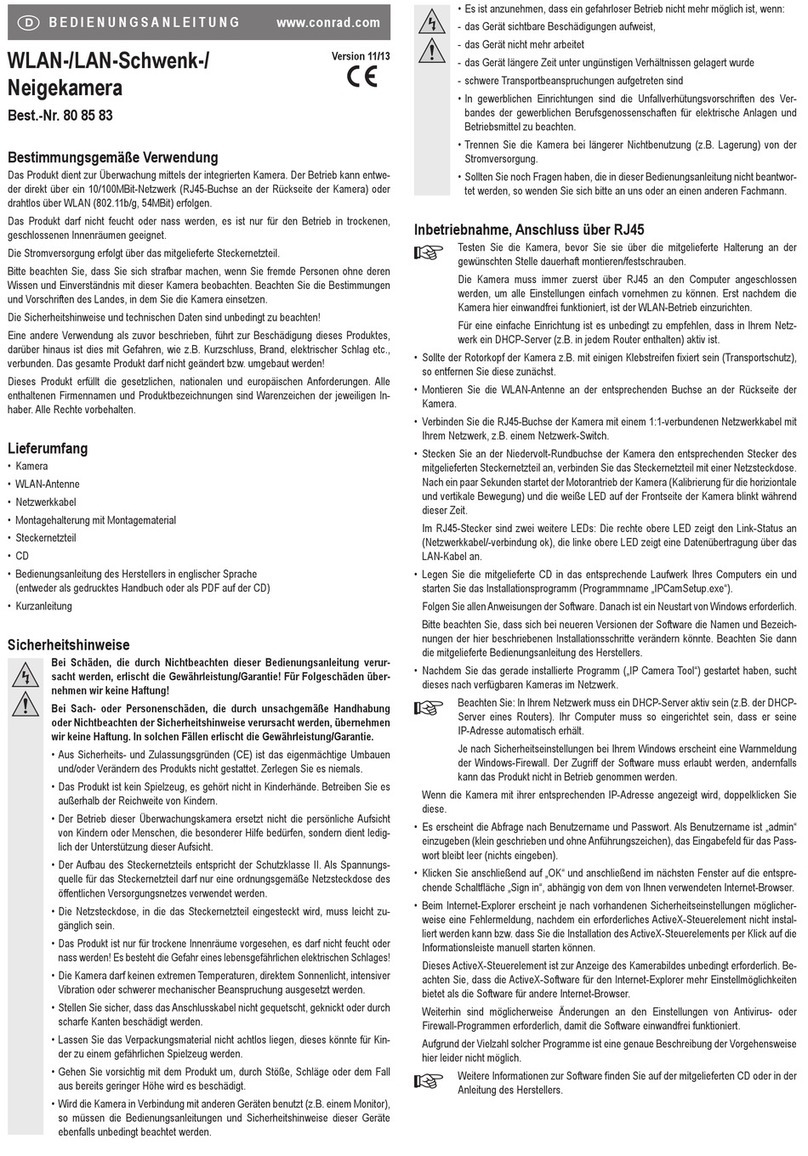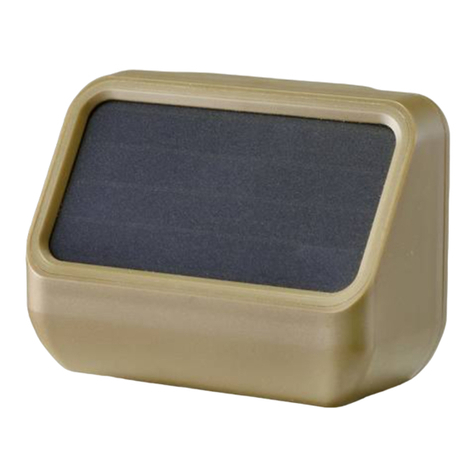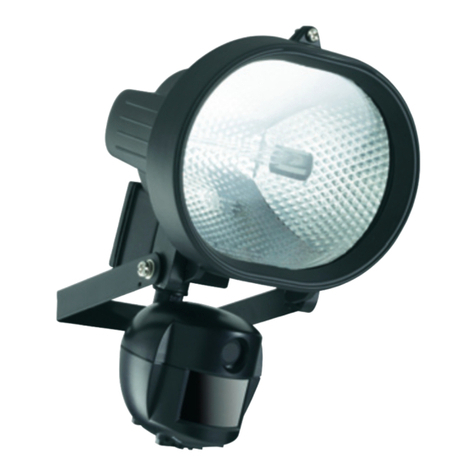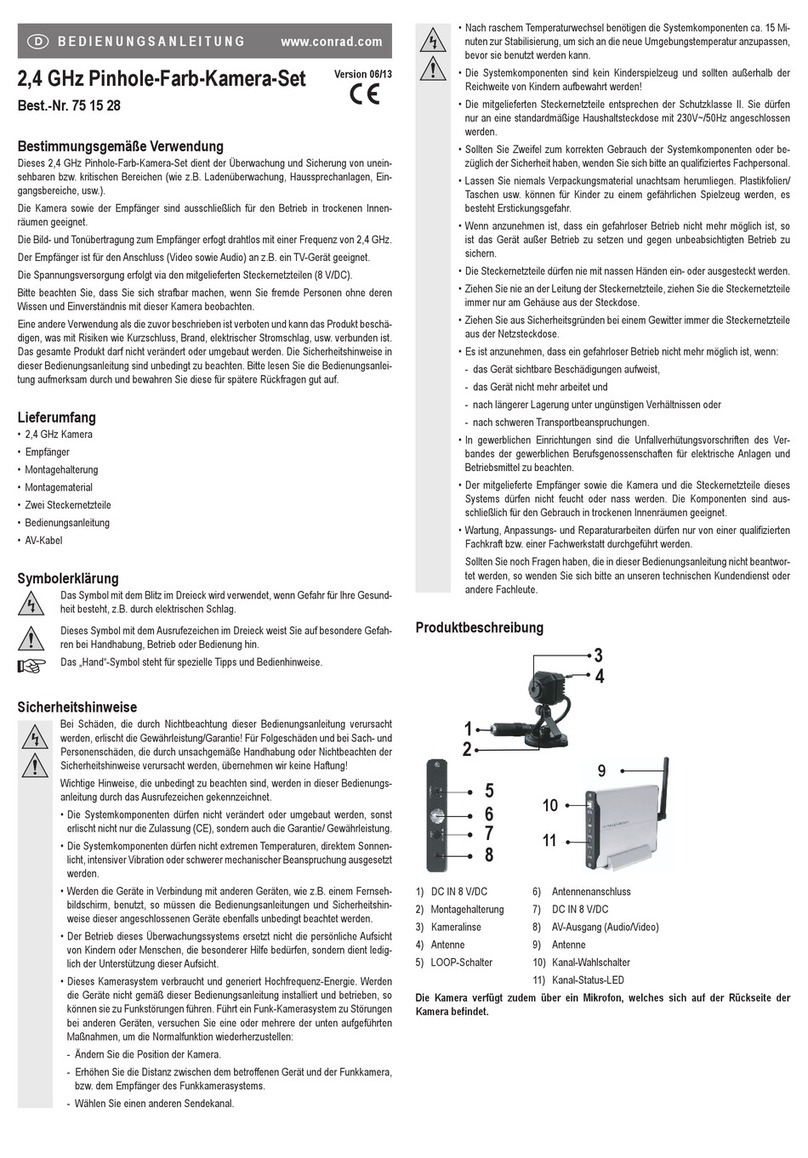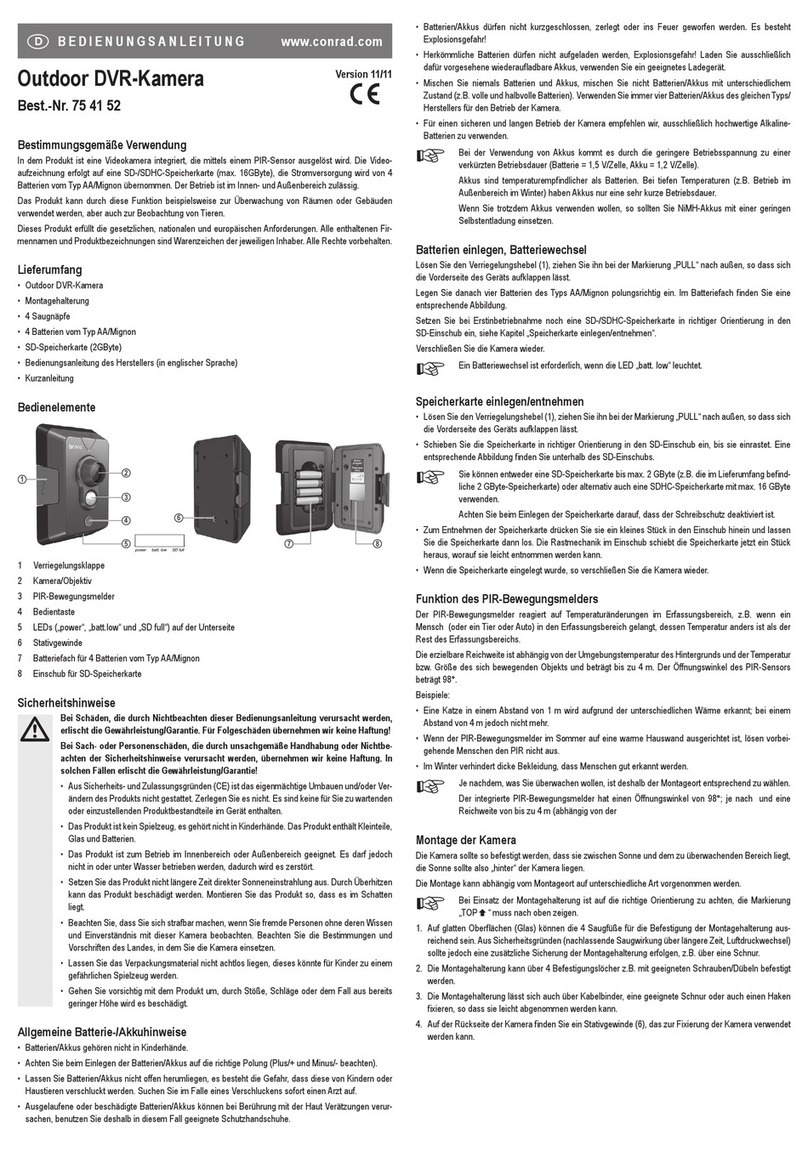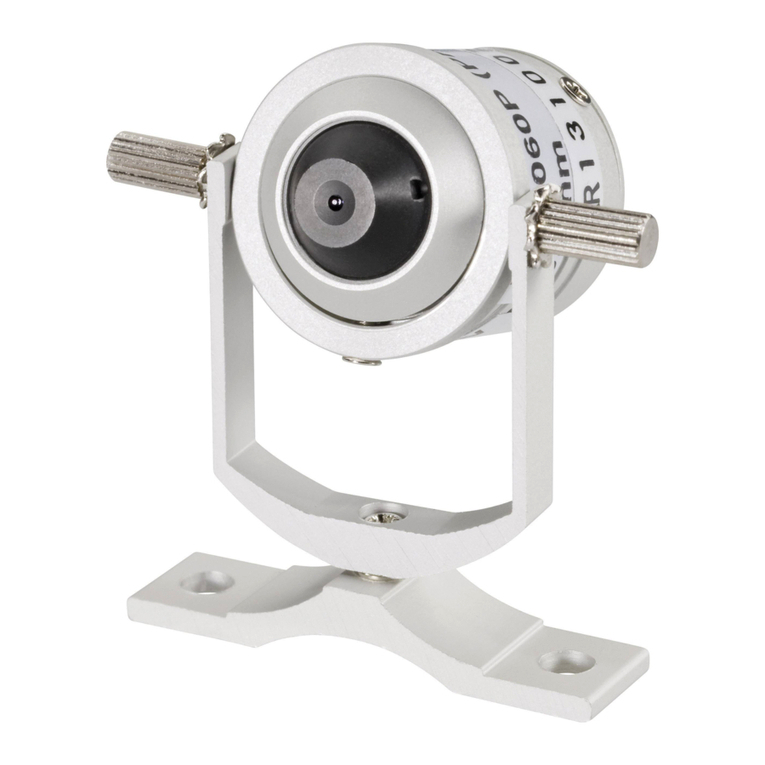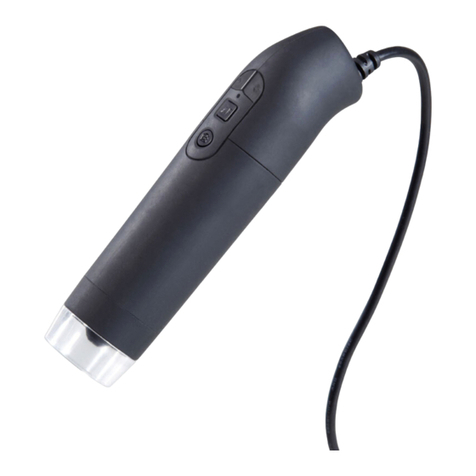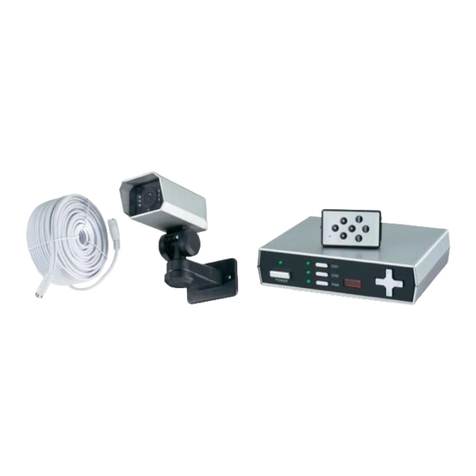
Operating voltage: 12 V DC
Power supply: 150 mA
Video output level: 1 Vss / 75 Ohm
Camera: ¼” – Color Sharp CCD
Minimum illumination: 1 Lux (F: 1,2)
Resolution: 500H x 582V / 400 TV lines
White balance: automatic / by hand
Video noise: > 45 dB (Auto Gain Off)
Lens: 3,5mm – 8mm
Lens mount: C/CS mount
Auto Iris Control: DC/video
Weight: 500 g
Dimensions without lens: (L) 132 x (W) 65 x (H) 50 mm
Operation temperature: -10°C to +50°C
Supplied power supply: 12 V DC 500 mAh
Supplied lens: 3,5mm – 8mm with CS mount
Mode d’emploi
Caméra couleur sonore avec objectif 3,5 mm – 8 mm KC-3800
Le présent mode d’emploi fait partie intégrante de ce produit. Il comporte d’importantes indications afférentes à la mise en service et à la manipulation
de l’appareil. Tenez compte de ces remarques, même en cas de cession de ce produit à un tiers. Par conséquent, ce mode d’emploi doit être conserver
pour une référence future.
Cher client,
Nous vous remercions pour l'achat de cette caméra. Avec ce système, vous avez acquis un produit fabriqué conformément à l’état actuel de la technique. Ce
produit répond aux exigences des directives européennes et nationales en vigueur.
Pour toutes questions, adressez vous à notre service conseil technique :
France: Tél. 0 826 827 000 · Fax 0 826 826 002
email: technique@conrad.fr
du lundi au vendredi de 9h00 à 19h00 samedi de 9h00 à 18h00
Suisse: Tél. 0848/80 12 88 · Fax 0848/80 12 89
email: support@conrad.ch du lundi au vendredi de 8h00 à 12h00, 13h00 à 17h00
Utilisation conforme
La caméra permet de surveiller et de protéger les espaces inaccessibles ou critiques (comme surveillance pour les commerces, dans les interphones ou les halls
d’entrée, sur les parkings etc. et de restituer les images enregistrées sur chaque téléviseur ou moniteur approprié disposant d’une entrée AV.
La caméra est conçue pour une utilisation intérieure. Mais équipée d’un boîtier de protection contre les intempéries (non fourni), la caméra peut également être
utilisée à l’extérieur. La caméra peut être fixée au mur ou au plafond à l’aide d’un support fourni en option.
Observez que vous êtes passible de peine lorsque vous observez des personnes étrangères sans qu’elles ne le sachent et sans leur consentement avec cette
caméra.
Ce produit n’est agrée que pour le branchement sur une tension continue de 12 volts.
Toute transformation ou modification de l’appareil est interdite ! Impérativement observer les consignes de sécurité !
Consignes de sécurité !! De même, le constructeur n’assume aucune responsabilité en cas de dommages matériels ou corporels résultant d’une
utilisation de l’appareil non conforme aux spécifications ou d’un non-respect des présentes instructions ! Dans de tels cas, cela a pour effet d’annuler
la garantie.
Pour des raisons de sécurité et d’homologation (CE), il est interdit de transformer ou de modifier arbitrairement la caméra.
En cas de doute à propos du mode opératoire, de la sécurité ou du branchement de l’appareil, adressez-vous à un spécialiste.
Respectez également les consignes de sécurité et les modes d’emploi des autres appareils raccordés à l'appareil considéré ainsi que les différents chapitres de ce
mode d’emploi.
Ne laissez pas traîner le matériel d'emballage sans surveillance. Les films et les sachets en matière plastique, les pièces en polystyrène, etc. peuvent se
transformer en jouets dangereux pour les enfants.
L'appareil ne doit pas être laissé à portée des enfants. Il ne s’agit pas d’un jouet.
Dans les installations industrielles, il convient d’observer les consignes de prévention d’accidents relatives aux installations et moyens d’exploitation, édictées par
les syndicats professionnels.
Description du fonctionnement : La caméra peut être employée à des fins de surveillance dans le domaine de l’ingénierie de la sécurité, la télécommunication
visuelle, dans les halls d’entrée.
La caméra offre la possibilité de brancher un objectif auto iris. Le support de fixation est prévu pour les objectifs C ou CS.
Les diodes à infrarouges intégrées qui s’allument automatiquement permettent d’effectuer une excellente surveillance, même l’obscurité absolue. La portée des
diodes à infrarouges 12 m.
Mise en service : Afin de garantir une mise en service impérativement ce mode d’emploi dans intégralité ainsi que les consignes de sécurité avant d’utiliser
l’appareil.
Montage : Lors du choix de l'emplacement pour l’installation de évitez toute exposition directe au soleil, aux vibrations, à la chaleur, au froid et à l'humidité.
L’appareil doit se trouver à distance de tout appareil à fort champ magnétique.
Aucun appareil à fort champ électrique tel que téléphone portable, radio, moteur électrique, etc. ne doit se trouver à proximité de la caméra. Caux-ci pourraient
influencer la qualité de l’image de manière négative.
Une exposition directe au soleil, respectivement un éclairage clair, etc. pourrait fortement influencer l’image de la caméra et compliquer l’observation de l’image.
Veillez-y lors du choix de l’emplacement de montage.
Hauteur de montage recommandée pour l’objectif de la caméra : env. 1,8 m.
La hauteur de montage dépend de l’objet à surveiller. Avant le montage définitif, il est recommandé de brancher la caméra et de contrôler l’image de la caméra sur
le moniteur/téléviseur afin de s’assurer qu’il s’agit bien de la zone à surveiller. Pour ce faire, suivez les indications décrites sous « Branchement » (chapitre
suivant).
